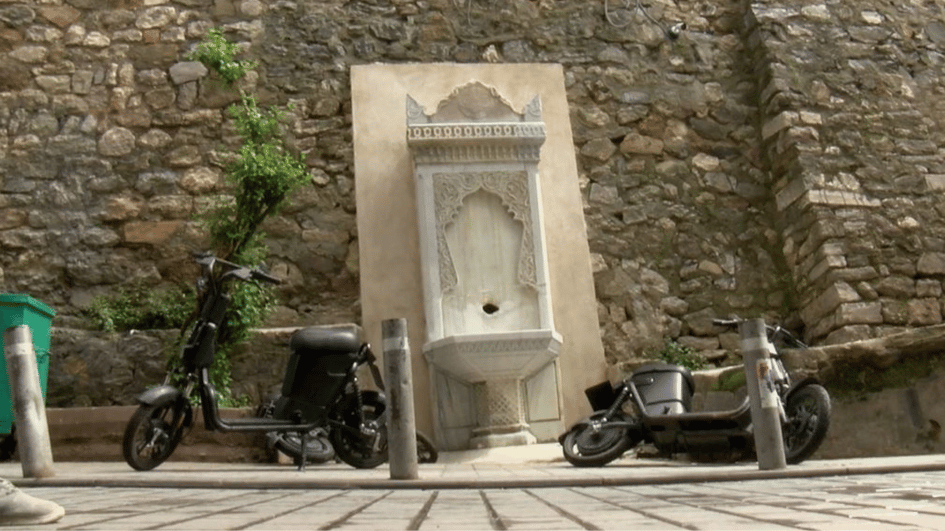Mosque causes controversy at Venice Biennale
VENICE – Anadolu Agency
 A Swiss-Icelandic artist has launched a mosque installation at an old church as part of the 56th Biennale art fair in the Italian city of Venice, sparking controversy and intrigue, local media reported on May 10.
A Swiss-Icelandic artist has launched a mosque installation at an old church as part of the 56th Biennale art fair in the Italian city of Venice, sparking controversy and intrigue, local media reported on May 10. According to the artist Christoph Büchel, 48, his installation titled “The Mosque: The First Mosque in the Historic City of Venice” was intended to promote religious tolerance.
The installation is placed in the former Catholic church of Santa Maria dell’Abbazia della Misericordia as part of Iceland’s pavilion at the Biennale.

The 10th century church building used for the artwork had been closed for more than 40 years, but in the installation it was converted into a mosque with Arabic scripts similar to Istanbul’s historical Hagia Sophia Museum. A prayer rug facing Mecca was also placed in the installation. Leaving their shoes at the door, worshippers faced Mecca and knelt to pray while around them visitors toured the exhibition.
Büchel has prepared his installation in collaboration with the Muslim communities of Venice and Iceland. The artwork aims to pay “attention to the political institutionalization of segregation and prejudice and to settlement policies that lie at the heart of global ethnic and religious conflicts today,” the project’s website elaborated.
Although Venice is home to almost 30 Muslim communities, there is no mosque in the city center.
The head of the Association of Muslims in Iceland, Ibrahim Sverrir Agnarsson, said he was invited by Iceland’s Culture Ministry to support the project. “I knew that the artist had some challenges while preparing this work … The opening was a big success,” he said.
“This is an art exhibition place and it will serve Muslims. People want to see what Muslims do in mosques, that’s all,” he added.
But city authorities expressed reservations, citing among other things the risk of the building being attacked by anti-Muslim elements or, on the other side of the spectrum, Islamist radicals, Agence France-Presse reported.
The president of the Veneto region, Luca Zaia, described the installation as a “provocation.” “The real issue,” he said, was “not freedom of religion, but respecting the rules” of an international art exhibition.
First African curator
In the opening of the 56th Venice Biennale, the jury awarded the Golden Lion for Best National Participation to Armenia for a pavilion about the Armenian diaspora.
The Golden Lion for Best Artist went to Adrian Piper of the United States pour “The Probable Trust Registry: The Rules of the Game #1-3.”
A Nigerian art critic and museum director is the first African to curate the Biennale, while female artists are representing more countries than ever in national pavilions, trends seen as an informal rebalancing in the art world, the Associated Press reported. As part of this there is Joan Jonas for the U.S., Fiona Hall for Australia, Irina Nakhova for Russia, Sarah Lucas for Great Britain, Chiharu Shiota for Japan, Pamela Rosenkranz for Switzerland and Camille Norment for Norway. And those women are all from the more established Biennale participants in the Giardini, around one-third of the 89 national pavilions.
The contemporary art Biennale, held once every two years, will run through Nov. 22 at the Giardini, Arsenale and other locations throughout Venice.
















